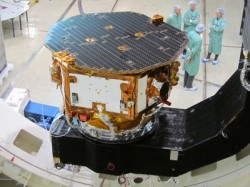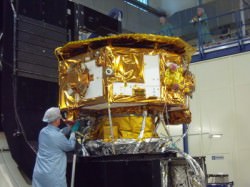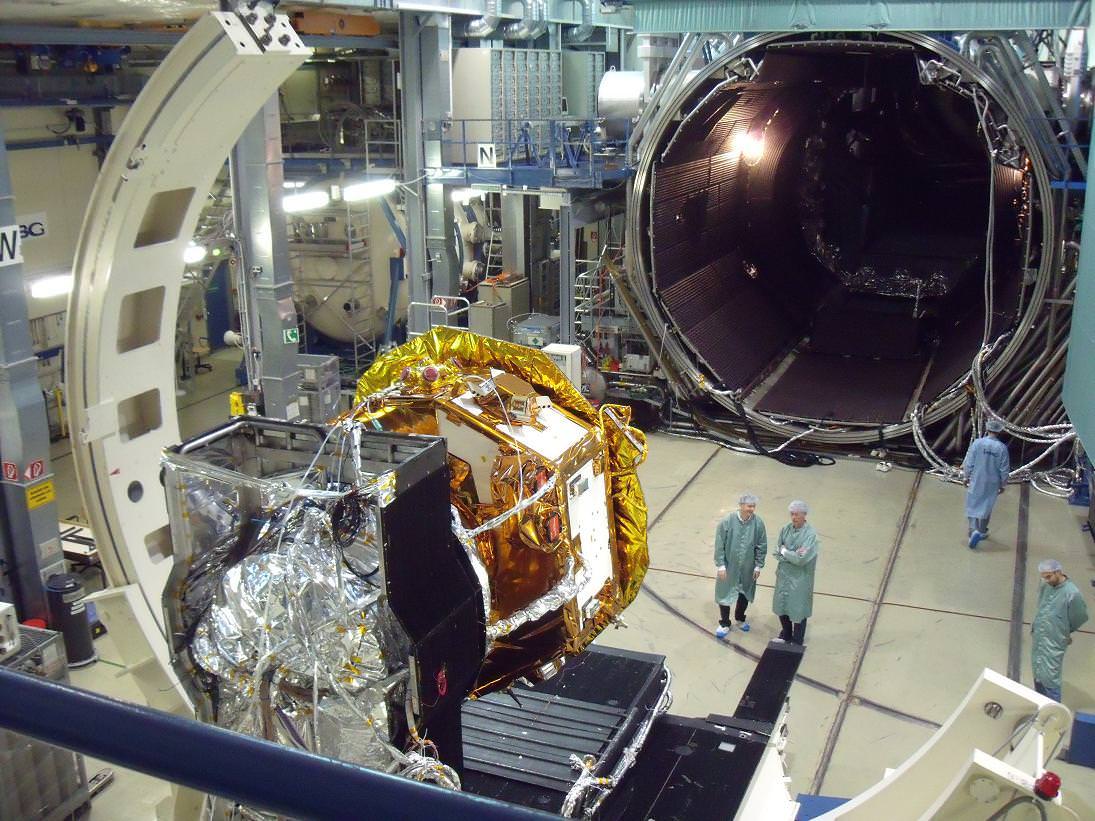[/caption]
Do you remember the LISA mission? I do! The proposed launch for this unique vision is slated for 2014 and the latest sensor technology is making its own waves… by being far more accurate than expected. Now ESA’s LISA Pathfinder mission is better than ever, and ready to tackle the vast ocean of space in search of elusive gravitational waves…
So what’s new? By employing a near complete version of LISA, the Optical Meteorology Subsystem passed its first test under space-like temperature and vacuum conditions. Not only did it make the grade, but it went far beyond. It surpassed the precision requirement needed to detect gravitational waves by 300%!
Einstein predicted them, but to physically record this phenomenon in space, the LISA Pathfinder will utilize a laser to measure the distance between two free-floating gold–platinum cubes. Here on the ground, the team in Ottobrunn, Germany, are performing the tests using mirrors instead of cubes. Not only will the distance between them be cataloged, but their angles with respect to the laser beams. Is LISA good? Darn right. She had an accuracy rating of 10 billionths of a degree!

So how are gravitational waves detected? If perfect conditions do exist in space, then the free-floating cubes should mirror each other’s motions. Now, enter Einstein’s general theory of relativity. If some gravitational event should occur – such as the collision of two black holes – this should cause a minute distortion in the fabric of space. These tiny changes should be detectable. However, the accuracy needed to record such an event would need to be about one hundredth the size of an atom… a size called a “picometre”. Originally, LISA was optimized at 6 picometres measured over a timeline of 1000 seconds. But she bettered her record in 2010 and has now reached an amazing accuracy level of 2 picometres.
“The whole team has worked extremely hard to make this measurement possible,” said Dr McNamara. “When LISA Pathfinder is launched and we’re in the quiet environment of space some 1.5 million km from Earth, we expect that performance will be even better.”

Way to go, LISA!
Original Story Source: ESA News Release.


Sadly, LISA Pathfinder isn’t going to detect any gravity waves. The three LISA interferometer probes are going to send light around a huge triangle to see whether we can detect any distortions. One craft cannot do much by itself, other than show that it is able to suspend the mirror and point it to the absurd, nay completely bonkers accuracies needed for this experiment. If this all works, the real fun starts in about 2018.
Please stop using the word ‘slated’ wrongly!!!!!!!!!!!! Sorry…
We may need IVAN-man to the rescue.
I get ‘to (be) schedule(d)” as one possible definition, wouldn’t that work?
Yes indeed… My bad!! No more drunken posts from me!
This mission won’t happen in the next twenty years. Good job though!
Yeah and contact your “Barack Obama” and tell him to fund it properly. 😀
Man, 300%. That’s like a fairytale.
I hope this flies. The detection of gravity waves is the last major prediction of general relativity left to be detected.
LC
I hope they find messages from an alternate dimension in the gravity wave data… Would THAT be cool? or what? Dahh dit dahh dit.. Dahh Dahh dit Dahhh…
That is one crazy instrument. A hydrogen atom is ~ 1 Å or 0.1 nm, so 2 pm is like resolving 1/50th of an atom. Way better than microscopes like AFM, which can see atoms at best.
We will need femtometers soon. A hydrogen nucleus is ~ 20 fm. This resolution is about 100 hydrogen nuclei in a row, give or take a few.
With the syncronicity of the web, here is today’s small and cheap suggestion for a gravity detector. Essentially two right angled SC antennas (electron cloud vs crystal mass) with a SC bridge in between.
They may make it before LISA Pathfinder. But so could all the rest of the numerous suggestions. =D
amazong probe! let’s hope the launch vehicle wont mess up.